See Orion Nebula Through Telescope
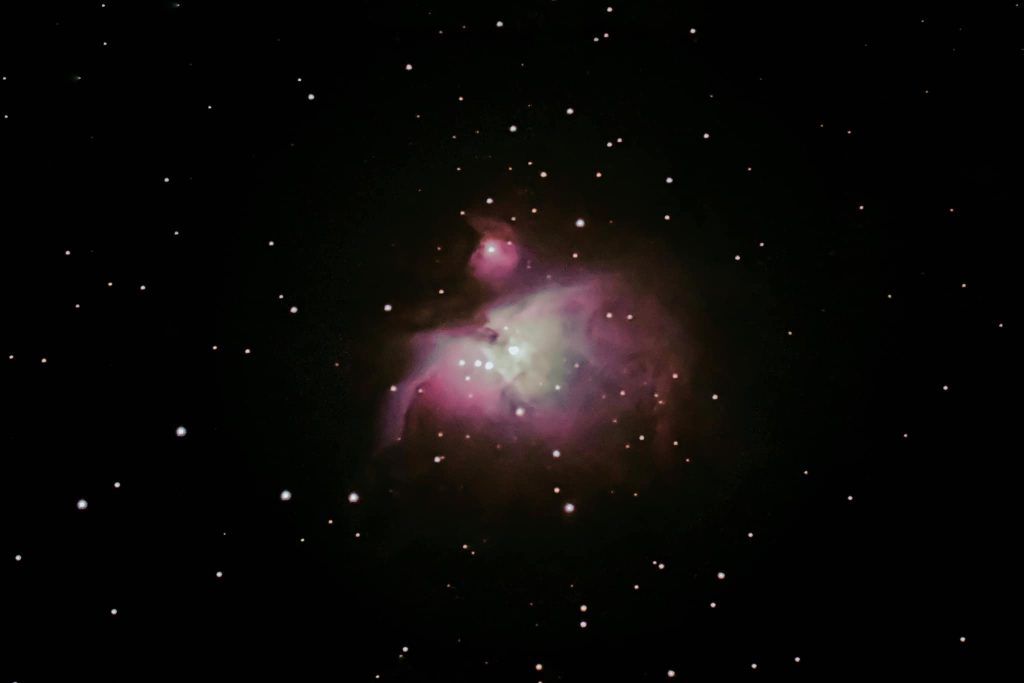
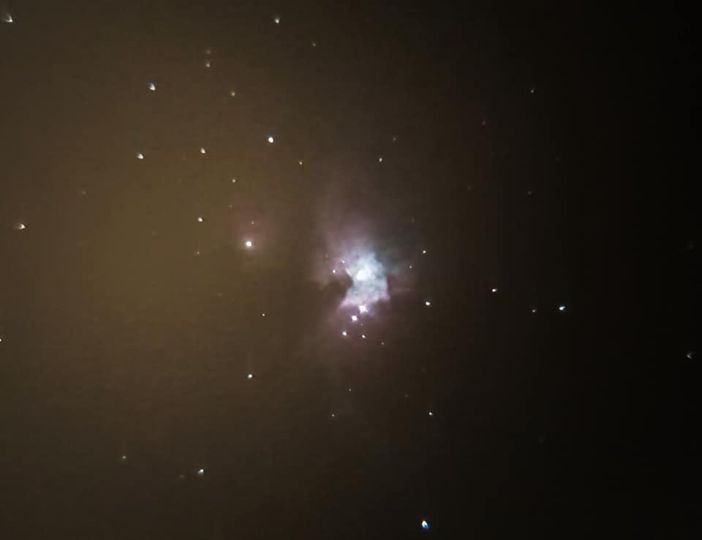
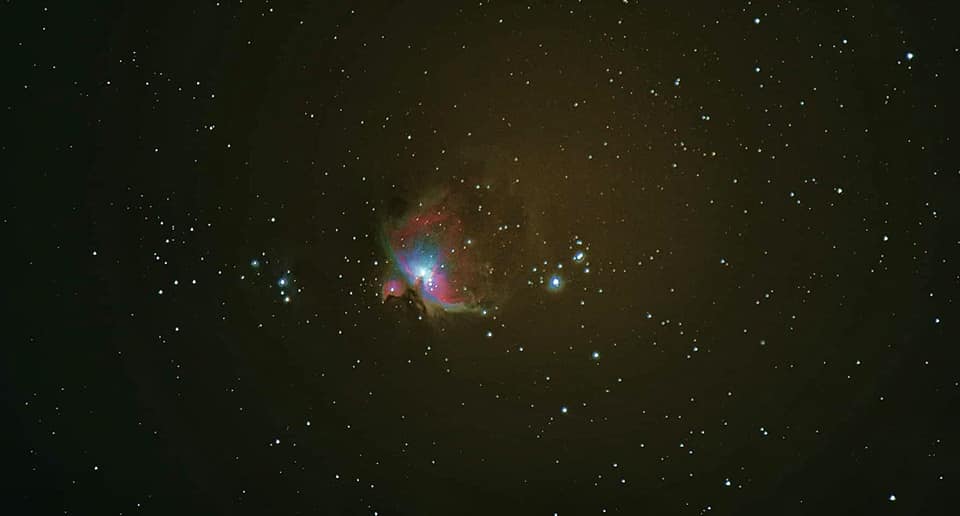
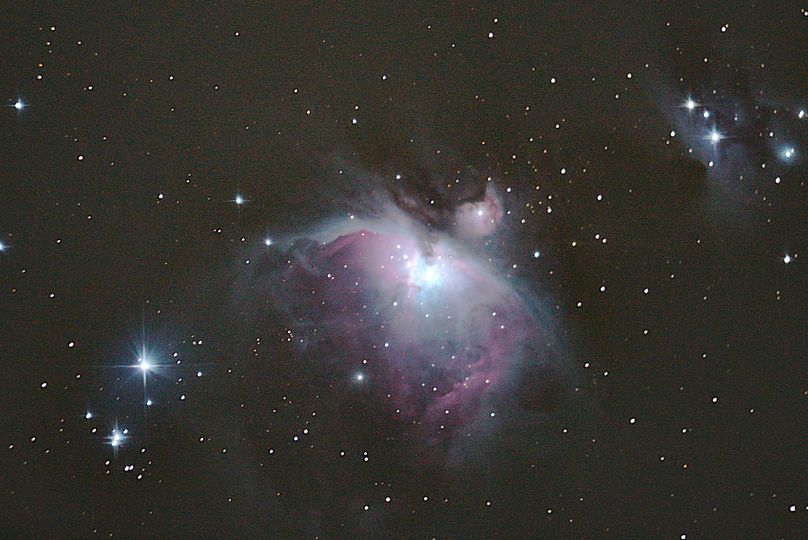
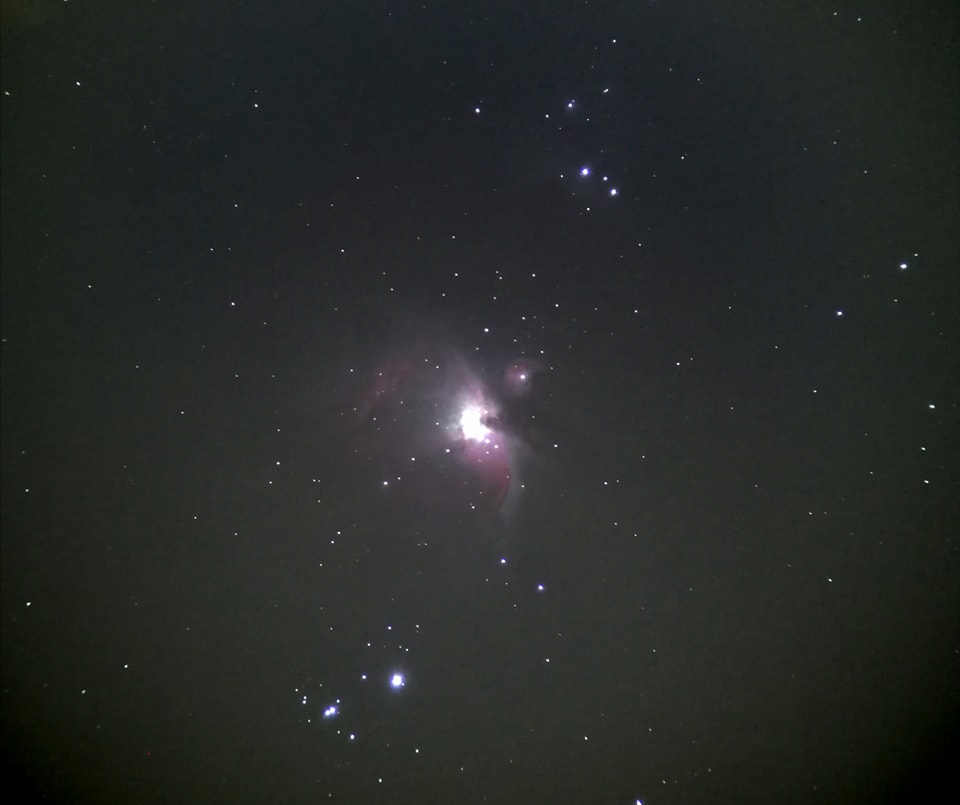
The Orion Nebula (M42) is a bright and visible nebula that can be seen with the naked eye under dark skies, but is best viewed with a telescope for more detail. Even a small telescope with a diameter of 60mm can reveal the nebula’s faint, misty shape, while larger telescopes with a diameter of at least 150mm can show intricate details such as swirling clouds of gas and dust and young stars forming within the nebula, including the Trapezium cluster. The Orion Nebula can also be photographed without a telescope, and new images from the James Webb Space Telescope reveal previously unseen details. Dark adaptation and a low exit pupil on your eyepiece can improve views of the Orion Nebula through a telescope.
Orion Nebula appears as a majestic, misty, and sprawling gas cloud with a distinctive greenish-blue hue through a telescope. The central region of the nebula is particularly bright and irregularly shaped, spanning approximately 1° x 1.5° in angular size. The intricate structures of the Orion Nebula become more apparent when observed through a telescope, with dark lanes and wispy tendrils of gas and dust visible. The brightest region of the nebula is the Trapezium Cluster, which is easily resolved into four bright stars. The nebula’s characteristic greenish-blue color is due to the faint, diffuse glow of ionized hydrogen and oxygen.
The Orion Nebula is located within the constellation Orion, specifically in the “sword” of Orion, which is not to be confused with Orion’s Belt. The sword hangs from the belt and is where the nebula’s fuzzy patch can be observed. The Orion Nebula is approximately 1,300-1,600 light-years away, making it the closest star-forming region to our planet. This proximity provides researchers with an exceptional opportunity to study the processes of star formation and the evolution of stellar systems. The sword of Orion, and thereby the Orion Nebula, can be found in the southwestern region of the night sky, making it accessible for observation from many locations around the globe.
Can you see the Orion Nebula with a telescope?
Yes, you can see the Orion Nebula with a telescope. The Orion Nebula (M42) is one of the brightest and most visible nebulae in the night sky, making it an ideal target for amateur astronomers and telescope enthusiasts. Even a small telescope with a diameter of 60mm (2.4 inches) can reveal the nebula’s faint, misty shape, allowing viewers to see this celestial wonder.
Larger telescopes, with a diameter of at least 150mm (6 inches), are recommended to observe the nebula’s intricate details, such as swirling clouds of gas and dust. A telescope can reveal the young stars forming within the nebula, including the Trapezium cluster, a group of young, hot stars that can be seen with a telescope. Dark adaptation and a low exit pupil on your eyepiece can improve views of the Orion Nebula through a telescope.
Can you see Orion Nebula colors with a telescope?
Yes, you can see the Orion Nebula’s colors with a telescope. The Orion Nebula, a diffuse nebula known as M42, emits light across the entire electromagnetic spectrum, including visible wavelengths that result in vibrant colors. These colors are due to different ionized gases, such as hydrogen, oxygen, and sulfur. When viewed through a telescope, the Orion Nebula reveals its beautiful shades of pink, red, and green. However, the colors may not be as vibrant as in long exposure photographs.
To observe the Orion Nebula’s colors, you will need a telescope with an aperture of at least 60 mm (2.4 inches). Moderate to high magnification (100x to 200x) will further enhance your view of the nebula’s colors. Darker skies and dark adaptation can improve the visibility of the nebula and its colors. While most deep sky objects appear grayish-blue or grayscale, the Orion Nebula stands out with its colorful appearance. The dominant colors are green, red, and blue, caused by doubly ionized oxygen (O III), ionized sulfur (S II), and ionized hydrogen (Hα) emissions, respectively.
The use of specific camera filters and image processing techniques in astrophotography can capture the Orion Nebula’s colors more effectively. Nebula filters, such as O III or Hα filters, can enhance the visibility of the nebula’s colors when observing through a telescope. Although the colors may appear more subtle and pastel-like when viewed in person, a decent telescope can reveal the nebula’s vibrant colors and structure.
Can you see the Orion Nebula without a telescope?
Yes, it is possible to see the Orion Nebula without the aid of a telescope. The Orion Nebula, known as M42, is a star-forming region located in the constellation Orion, and it is one of the most studied and photographed objects in the night sky.
The visibility of the Orion Nebula without a telescope is subject to dark skies with minimal light pollution. The best time to view the Orion Nebula is between December and February when it is at its highest point in the sky. The Orion Nebula can be seen as a faint, misty patch in the “sword” of the constellation Orion.
Orion Nebula appears as a hazy, diffuse spot to the naked eye. The nebula, which is about 1,500 light-years away, is a rich source of gas, dust, and young stars, making it a fascinating object for astronomers and stargazers alike.
What does Orion Nebula look like through a telescope?
The Orion Nebula (M42) looks like a majestic, misty, and sprawling gas cloud when viewed through a telescope. The central region of the Orion Nebula is particularly bright and irregularly shaped, spanning approximately 1° x 1.5° in angular size, which is roughly equivalent to the size of the full Moon.
When observed through a moderate-sized telescope, with a diameter ranging from 8 to 12 inches, the intricate structures of the Orion Nebula become more apparent. Dark lanes and wispy tendrils of gas and dust are visible, adding depth and complexity to the nebula’s appearance. The brightest region of the nebula, known as the “Trapezium Cluster,” is easily resolved into four bright stars. This cluster is a focal point for observers, as it is one of the most prominent features within the nebula.
The Orion Nebula’s characteristic greenish-blue color is due to the faint, diffuse glow of ionized hydrogen and oxygen. As you gaze deeper into the nebula, this glow becomes more noticeable. The outer regions of the nebula appear more diffuse and feathery, with a subtle, mottled texture. This texture is more pronounced in larger telescopes, with diameters of 12 inches or more, allowing observers to discern additional details such as dark lanes of interstellar dust and more intricate tendrils of gas.
The nebula’s central region has a distinctive “wing-like” or “hourglass” shape. This shape is formed by the intense radiation and strong winds emanating from the massive stars at its core. Orion Nebula has a brightness of around magnitude 4. This makes it visible even in small telescopes or binoculars, offering amateur astronomers an excellent view of this celestial wonder.
The surrounding stars, including those in the Trapezium Cluster, shine with a blue-white color. This contrast adds to the nebula’s striking visual appearance, making the Orion Nebula a must-see object for anyone with a telescope and a clear night sky.
Where is the Orion Nebula?
The Orion Nebula is nestled within the constellation Orion, often recognized by its prominent and distinctive pattern of stars. This constellation, named after Orion (the Hunter in Greek mythology) is a familiar sight for stargazers and astronomers alike.
Within the constellation, the Orion Nebula is specifically located in the “sword” of Orion. This sword, which is visually represented by a group of stars, is not to be confused with Orion’s Belt, another notable feature of the constellation. The sword hangs from the belt and is where the nebula’s fuzzy patch can be observed.
The Orion Nebula is not just noteworthy for its location but for its proximity to Earth. It is approximately 1,300-1,600 light-years away, making it the closest star-forming region to our planet. This proximity provides researchers with an exceptional opportunity to study the processes of star formation and the evolution of stellar systems.
When gazing upon the night sky, the Orion Nebula appears as a fuzzy patch within the sword of Orion. This is due to the massive cloud of dust and gas that makes up the nebula, illuminated by the young, massive stars within it. The sword of Orion can be found in the southwestern region of the night sky. Orion is accessible for observation from many locations around the globe.
How to find Orion Nebula?
To find Orion Nebula, follow the steps listed below.
- Start by locating the Orion constellation in the night sky, best visible from November to February around 9-10 PM.
- Look for three bright stars that form Orion’s Belt: Alnitak, Alnilam, and Mintaka.
- Identify the Sword of Orion below Orion’s Belt, a group of three fainter stars.
- The middle “star” in the Sword of Orion is the Orion Nebula (M42), appearing as a faint, misty patch.
- Use binoculars or a telescope for a more detailed view of the Orion Nebula.
- Find a dark location with minimal light pollution.
- Use a star chart or a mobile app like SkySafari or Stellarium to help locate the Orion constellation and nebula.
To find the Orion Nebula, start by locating the Orion constellation in the night sky. The Orion constellation is most visible from November to February and is highest in the sky around 9-10 PM. Look for three bright stars that form Orion’s Belt, known as Alnitak, Alnilam, and Mintaka. These stars are aligned almost vertically and are easy to spot.
Once you have found Orion’s Belt, look below it to identify the Sword of Orion. The Sword of Orion is a group of three fainter stars, and the middle “star” is not a star at all – it is the Orion Nebula (M42). The Orion Nebula appears as a faint, misty patch in the middle of the sword.
To get a more detailed view of the Orion Nebula, use binoculars or a telescope. The nebula is approximately 1,344 light-years away from Earth and spans about 24 light-years across. With a telescope, you can observe the nebula’s intricate details, including its bright central region and dark lanes of interstellar gas and dust.
For optimal viewing conditions, try to find a dark location with minimal light pollution. The Orion Nebula can still be seen in areas with light pollution, but darker skies will enhance your viewing experience. You can use a star chart or a mobile app like SkySafari or Stellarium to help you locate the Orion constellation and nebula. By following these steps, you should be able to find the Orion Nebula and enjoy its breathtaking beauty.
